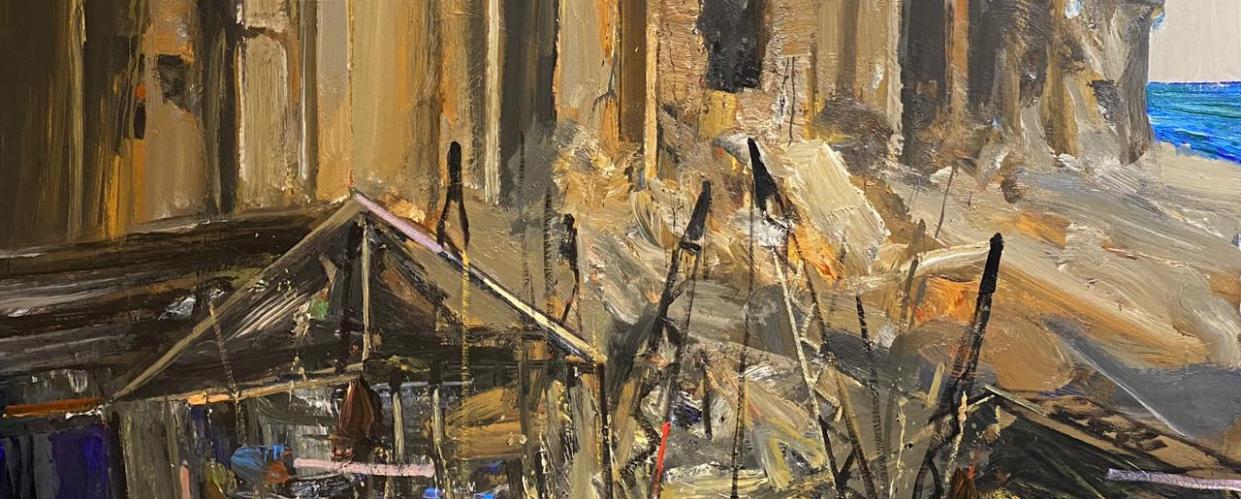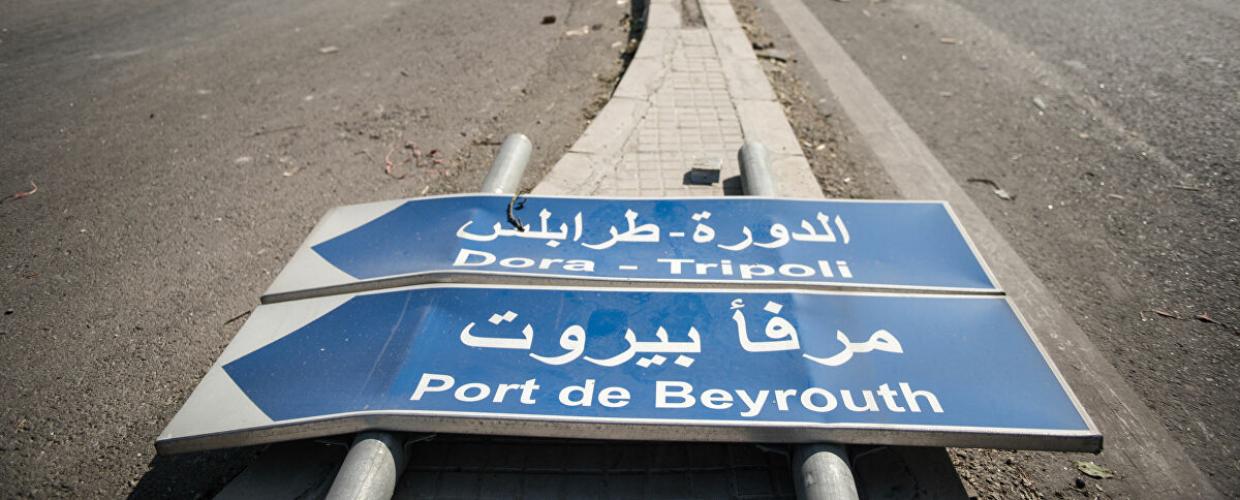
August 03 2021 Arabic, English

August 03 2021 Arabic, English

August 03 2021 Arabic, English

August 03 2021 Arabic, English

August 03 2021 Arabic, English

August 03 2021 Arabic, English

August 03 2021 Arabic, English


A deafening sound was heard. The building shook. Fragments of paint and dust rain from the ceiling. A painting fell off the wall onto the office desk. Work colleagues gathered and rushed outside. Screams filled the corridor mixed with a question: what happened?
Moments later, everyone was outside the building stepping on broken glass. Everyone was guessing, predicting, explaining and afraid. The first thing that came to everyone’s mind is that an Israeli strike has assassinated Sayyid Hassan Nasrallah, connecting the incident to the Israeli aircraft that dominated the sky of Beirut in days prior. Also because it is a habit for journalists to connect unrelated incidents: this is how they assassinated Qassem Soleimani, after drones and a helicopter covered the skies of Baghdad during the assassination.
A loud voice: look at that orange cloud. Eyes turn away from Dahiye, the southern suburb of Beirut. Colleagues assume that the targeting was of Saad Hariri, they quickly deny it, tensions rise.
We were in the Bir Hasan area. People leaned out their windows and gathered in the streets. I got into a car with my friend, the Journalist Omar Kaid and we headed towards the orange cloud that was our guide to the incident location. A bad habit of journalists is that they don’t have patience to be provided with information but rather venture into the heart incidents. News reports are exchanged on the radio, over the phone. Scenes of destruction extend near the closed area of Cornish al-Mazra’a at the Salim Salam tunnel, we change our route towards the seaside. We arrive at Ain Al Mraiseh where the hotels with fronts made of glass suddenly have no walls. The incident is confirmed by witnesses and the radio: an explosion at the port.
We stop the car due to the debris that blocked the street and walk towards the sound of the ambulance siren. Fragments of paper were flying in the air. I grab one and realize that it’s a customs clearance contract belonging to an investment company. The explosion threw a huge coach onto the street which blocked the way for ambulance that drove through a sideroad. so we help move it aside. We observe as an appalling tragedy hit the capital in one of its most bourgeois areas politically and financially. Maybe because tragedies unite people, no one thought of climbing up the ladders to steal from exposed extravagant buildings. The poor used to look at these buildings and realize the societal class gap. Yet, in such catastrophes all classes of people become equal. That is what we discuss as we move between the debris before reaching the port entrance.
We are met by bloodied faces of members of the army, we ask the obvious question: what happened? One of them answers that an Israeli strike has targeted the port. We enter with medics, but security forces yell at those present to prevent them from advance. We tell them that we are journalists, but we are still prevented from entry. A soldier’s voice erupts asking them to look for colleagues who went missing under the rubble Later we learned that all the people he mentioned have been martyred. The merciless fire was still engulfing whatever came in its way inside the port. Fire trucks fail to put them off. Members of the “Beirut Firemen” brigade are looking for 10 colleagues of theirs who have arrived before them at the port to put off a small fire that burst before the big explosion. Later, we also learned that all of them have died.
The Lebanese Army and its intelligence arrives. They begin shooting in the air, blocking the way for pedestrians and only opening it for ambulances and fire trucks. They order everyone to evacuate, and so we do. We walk back towards Beirut’s downtown and continue towards a parking lot for passengers traveling to Syria. Destruction prevails in the city. We attempt to ask some of the wounded about what had happened, we are told that the whole Achrafieh area was destroyed.
We head there on food, the roads are closed. We return to Ain Al Mraiseh, where we left the car, with many unanswered questions. On our way, we meet Palestinian youths from the Burj al-Barajneh and Shatila camps, volunteers with the Palestinian civil defense and the Palestinian red crescent who rush to the port to help. We thank them and tell them to take care. An hour later, we organize a campaign through the Palestinian Journalists Collective in Lebanon to donate blood and head to hospitals. Indeed, Palestinians from the camps participated in the campaign, hospitals and clinics in the camps opened up to the wounded, and volunteers from the north and south heeded the call.
Many things, once they happen, cannot be changed. A word said cannot be unsaid and so is passed time. The dead cannot come back to life. Yet, memories, especially the ones that are charged with intense emotions, are relived in one’s mind forever. The explosion of the Port of Beirut is an unforgettable tragedy, but alas, who can bring the victims or parts of the capital that was on the verge of death back to life.
-







